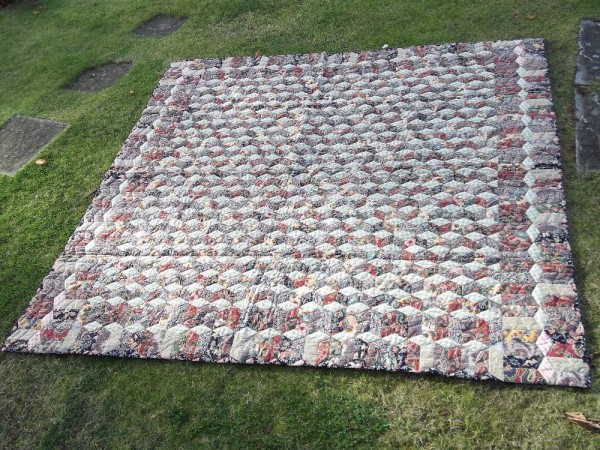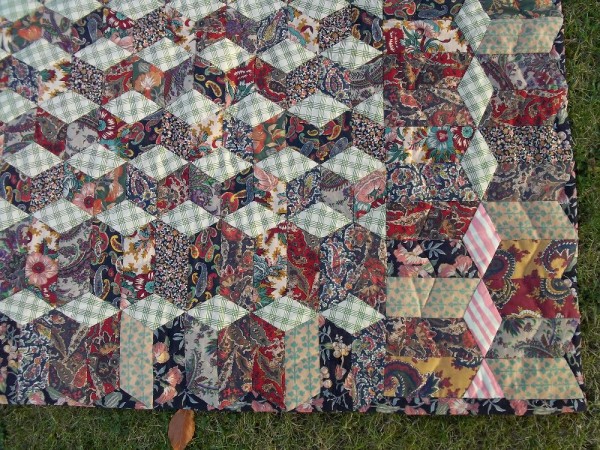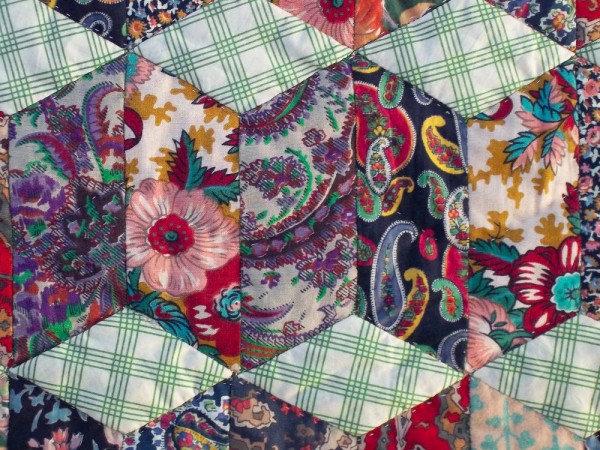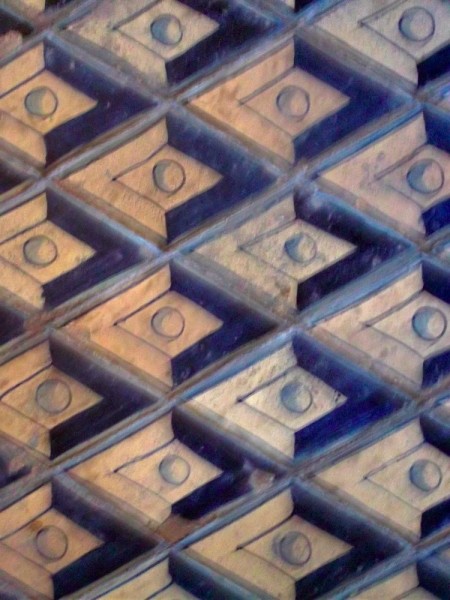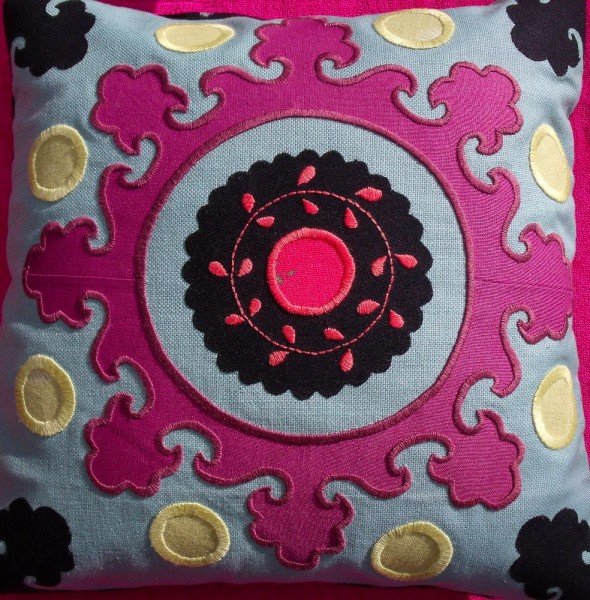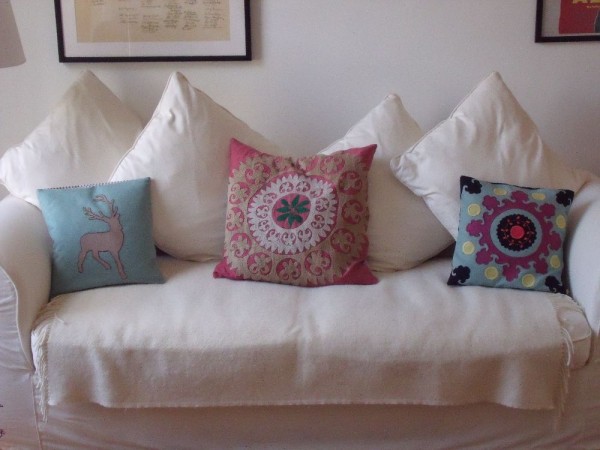How even a little weak sun can make colours look washed out. I photographed this quilt in October during one of those brief dry and sunny spells and really it’s not a very good picture but it does show it in its entirety.
All the fabrics are Liberty and old Laura Ashley and are a mixture of lawns and slightly heavier cottons. The edge was a particular challenge and my solution (see above) was not particularly successful. All the blocks were sewn over papers and the quilting was done by hand.
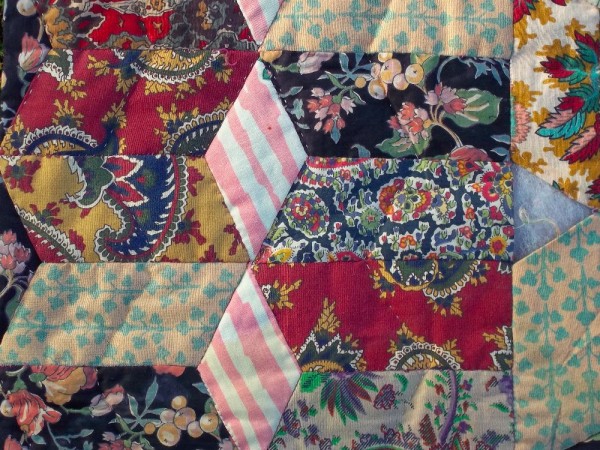
Baby blocks quilt: detail, ( The whole quilt to chose and I find I’ve photographed the one piece with a missing patch! )
Baby’s blocks is also known as tumbling blocks and such a simple pattern can often be seen on stone floors and pavements in Italy. The individual blocks are often divided up further into even more complicated shapes or the lengths of the sides are varied. All deviations from the standard shape produce very different visual effects. When we went to Rome in November, we we fortunate enough to be able to stay in the Sistine Chapel for more than an hour. It was crowded but not impossibly so and we were able to move from seat to seat around the edge of the building to take in different perspectives. When craning your neck to look at the Michelangelo became too uncomfortable, it was a delight to study the floor which was a visual treat in black, grey and white marbles and other smooth, fine materials. I sat and copied various patterns and thought what good borders they’d make for quilts.
None of the floors I sketched in the Sistine Chapel used the tumbling blocks design. But the following floor can be found in the rooms beyond the Raphael Stanze. (Not a very good photograph.)
Helen Fairfield’s book “Patchwork from Mosaics” (Batsford, 1985) includes drawings she has made from mosaic floors all over Italy, some of which she has incorporated into the quilts she has made.The following are photographs of the diagrams in her book.
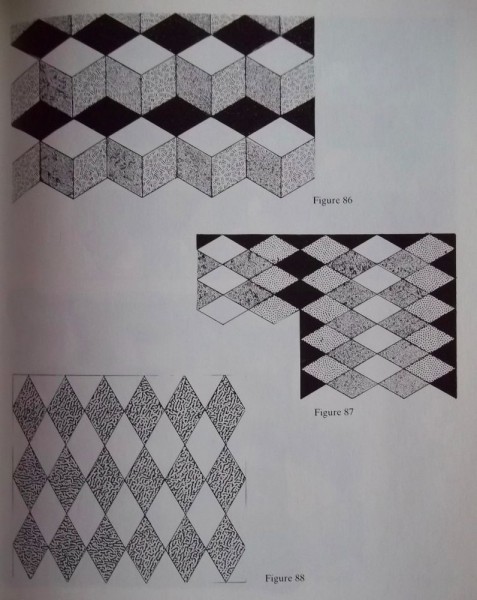
Diagrams of very simple mosaic floors:
top: a design of tumbling blocks from St Mark’s, Venice
middle: chequerboard floor design from the Baptistery, Florence
bottom: floor design from Orsanmichele, Florence
(from “Patchwork from Mosaics” by Helen Fairfield, Pub.: Batsford, 1985.)
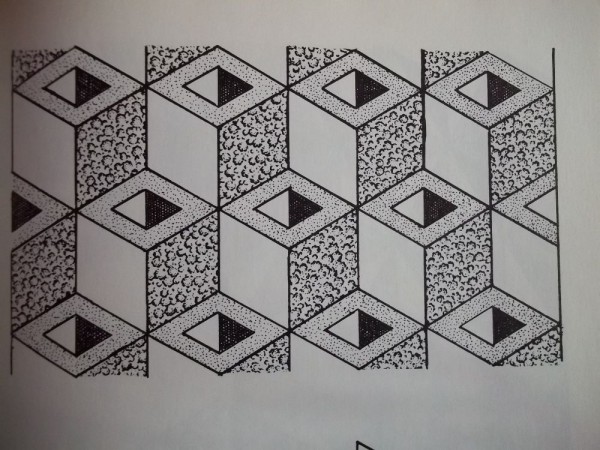
Detail of floor design from San Spirito, Florence (from “Patchwork from Mosaics” by Helen Fairfield, Pub: Batsford 1985)
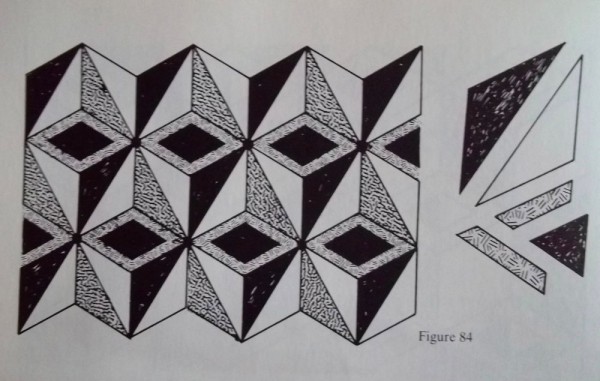
Floor design from Santa Maria della Salute in Venice (from “Patchwork from Mosaics” by Helen Fairfield, Pub.: Batsford, 1985)
If you were to to vary the design slightly and use I square for every 2 rhomboids, the visual effect becomes even more striking. This basic design is a favourite in many Venetian buildings, and often the units have been further divided as below.
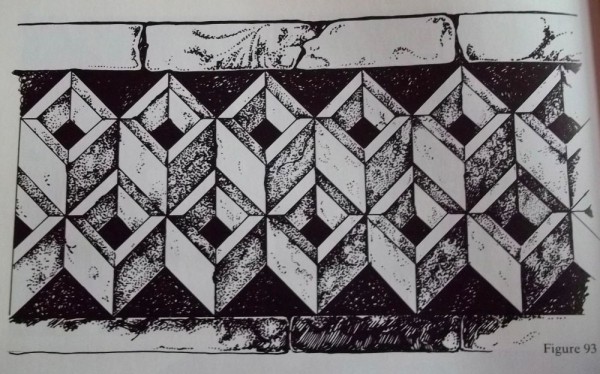
Diagram of part of floor from the main entrance to St Mark’s Basilica, Venice (from “Patchwork from Mosaics” by Helen Fairfield, Pub.: Batsford, 1985)
The diagrams above remind me how useful it is to play around with colouring in shapes on graph paper to see if you can come up with something a bit different. When I have more time, I shall transfer the sketches I made of the floors in the Sistine Chapel on to graph paper and think about whether any would make good quilts. One of the conclusions I have come to, is that what works on a floor, often will not work with fabric. The floor in St Mark’s in the above picture is wonderful as a floor, but I would find it far to busy for a quilt. In general my taste is for simpler designs for quilts and this is particularly true when patterned fabrics are used. After looking at a lot of complicated quilts I feel I long for a simple Amish or Welsh quilt which is made of simple blocks and few colours. For this reason, the quilt I’ve shown in this post is not my favourite and has perhaps served as a bit of a lesson for me. All the individual fabrics may be lovely, but put together, the whole looks rather…well… grey.

